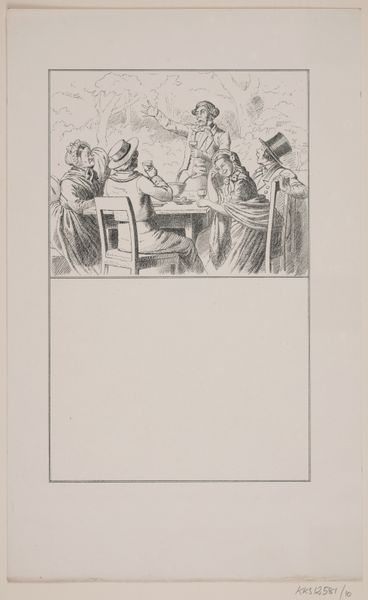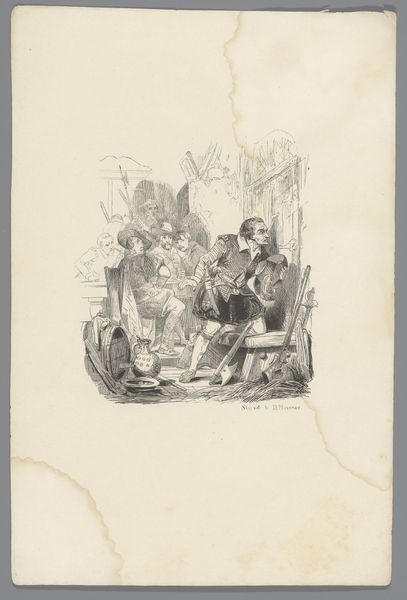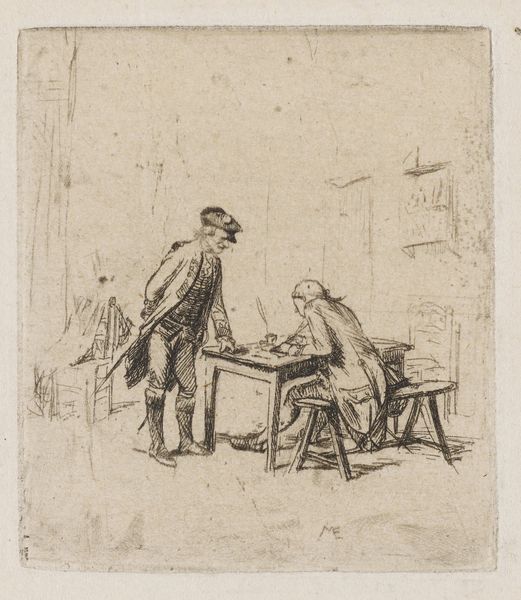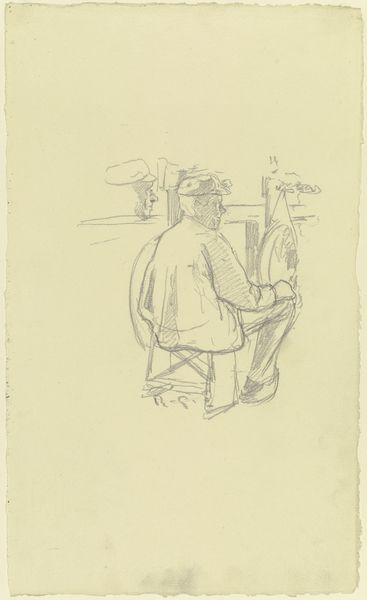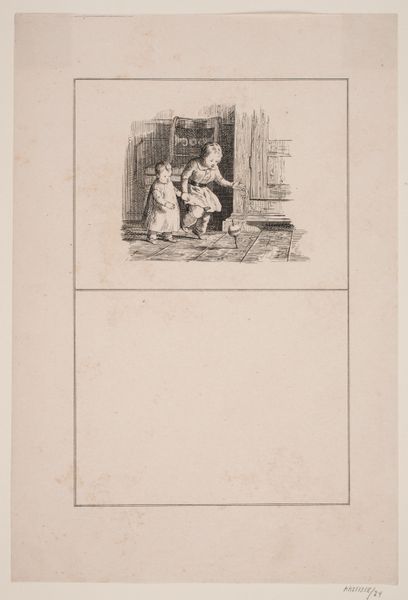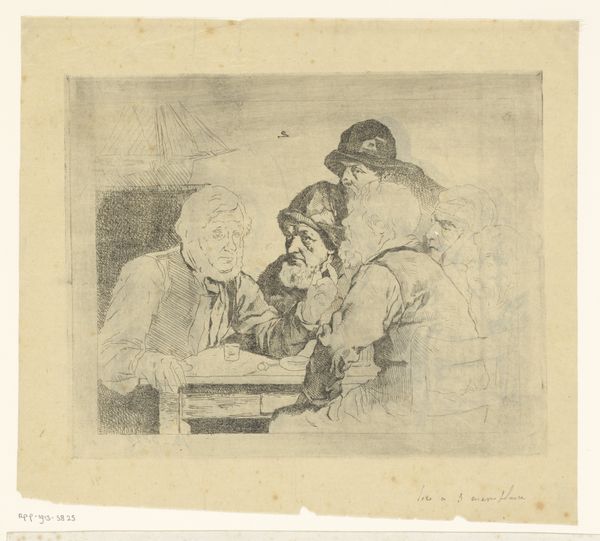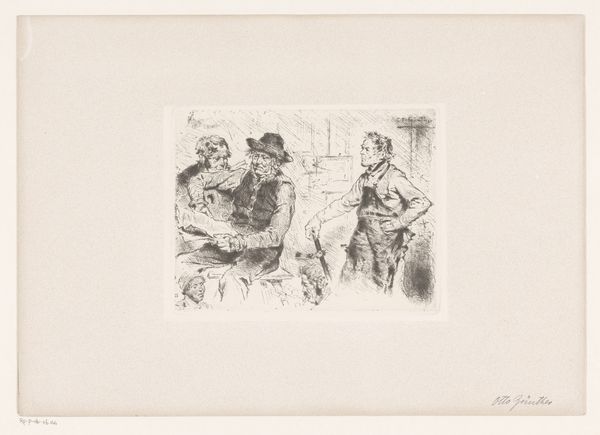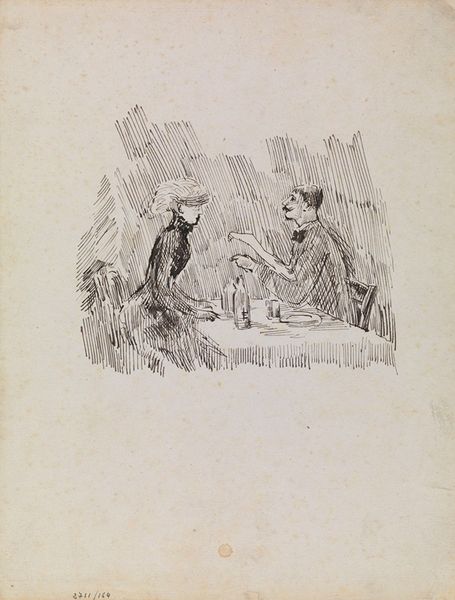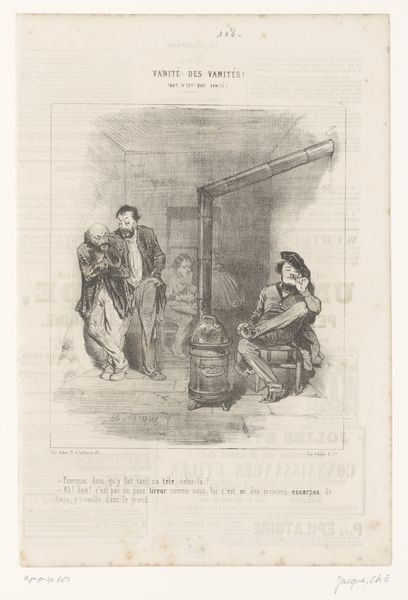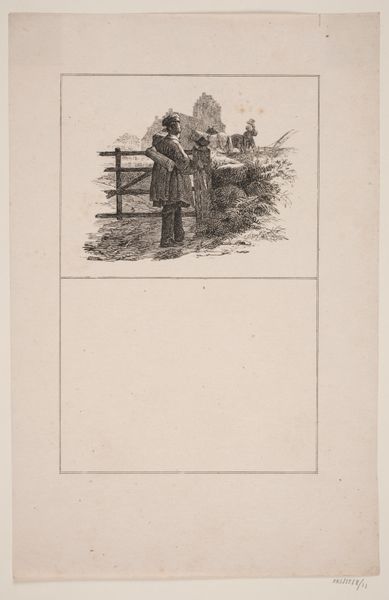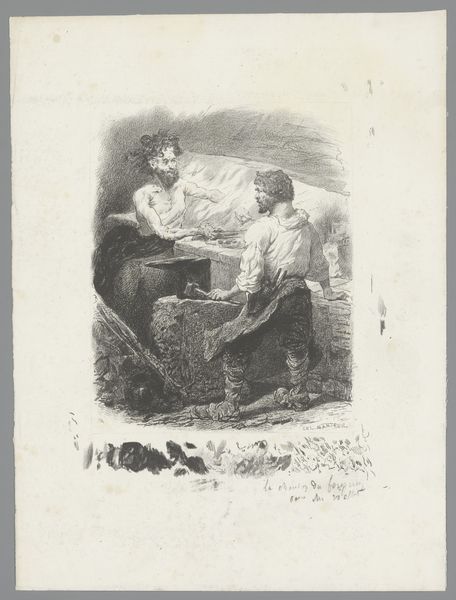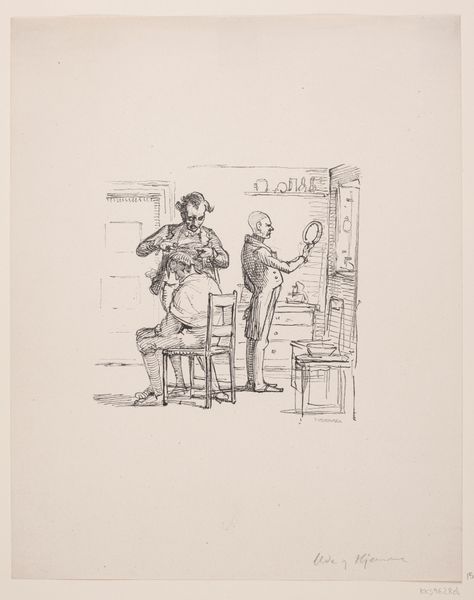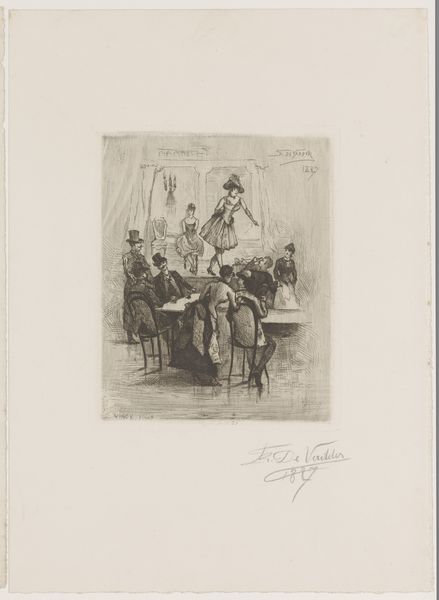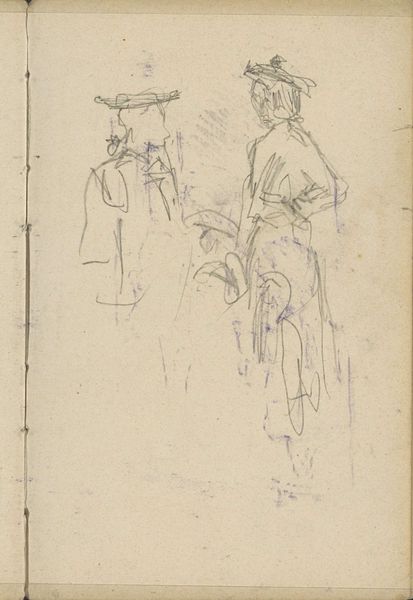
drawing, print, pencil
#
portrait
#
drawing
# print
#
pencil sketch
#
pencil
#
men
#
genre-painting
#
realism
Dimensions: Sheet: 8 7/16 × 10 3/4 in. (21.5 × 27.3 cm)
Copyright: Public Domain
Curator: Standing before us is a work by Wilhelm Leibl, an 1868 pencil drawing titled, rather pointedly, "The Critic," a name which hints at its confrontational spirit. What’s your take as you observe it? Editor: My first reaction is… well, these figures seem to be caught in a rather intense power dynamic, right? There’s a definite feeling of unease emanating from this roughly sketched scene, though with so few pencil strokes it also possesses a kind of unfinished grace. Curator: Precisely, though this being Leibl, "unfinished" is, I think, rather beside the point. Look at how precisely he captures the seated man's posture versus the more complete image of the so-called "critic", his index finger accusing the former as he stares down with what might be an aristocratic judgement! I would wager this piece serves as a quiet rebuke to the gatekeepers of artistic taste. It certainly speaks to anxieties around evaluation. Editor: I agree that the piece highlights tensions of class. The standing figure seems to represent the establishment or bourgeoisie. In this drawing we have what looks like an upper class person critiquing a tradesman working on a mundane wooden cart; they exist in very different social spheres. It's not difficult to read their expressions. It feels quite critical but also hopeless somehow. Curator: Ah, hopeless--that’s the kernel, I think! I see not just criticism but also the resignation to it, the understanding that taste, and by extension, opportunity, are shaped by these powers that be. There’s a fatalism in those hastily scribbled lines... even the very gray tone throughout conveys such emotional weight. Editor: And the fact that it’s a sketch, almost a preparatory work, amplifies that, doesn’t it? Like we’re seeing a fleeting moment, a glimpse into the daily grind of hierarchical societal pressures and how such imbalances can stifle human progress through criticism of others who are simply trying to survive. The lack of clear setting places emphasis on these character portrayals as if no backdrop matters other than social context. Curator: Well put. It resonates deeply because while ostensibly Leibl depicts an interaction between two men within 19th-century Bavaria, he taps into something far more universal: that fear of judgment and its lingering sting, one that extends from those early, harsh rebukes in the schoolyard to the sting of formal art criticism that affected his sales! This is what Realism does best--using one moment to amplify so many others. Editor: Indeed! Leibl reminds us of how systems of power often leave indelible marks upon individuals and, crucially, how artistic expression is necessary not just as creation, but protest. Curator: An essential reminder and the artist's greatest power--and maybe, ultimately, why we're still moved by his simple yet powerful sketch more than a century later.
Comments
No comments
Be the first to comment and join the conversation on the ultimate creative platform.
